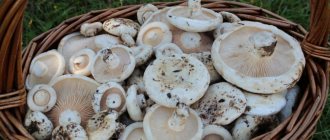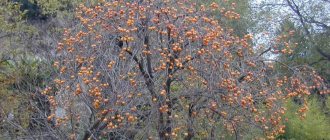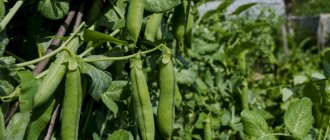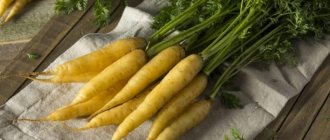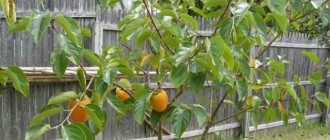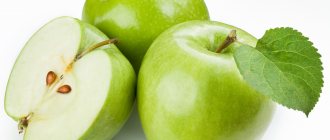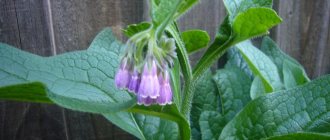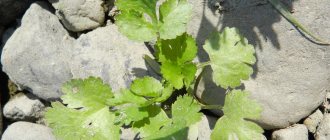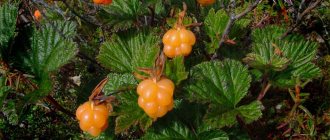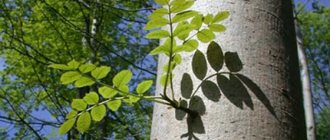Description of the fruit
Sharon is a hybrid of Japanese persimmon and apple, developed in Israel. The name refers to the valley of the same name in the West of this country, which is often called Saron.
Persimmon Sharon, the photo of which is posted in the review, is somewhat different from its relatives. The fruit contains few astringents, so its taste is very pleasant. Sharon has a minimum of tannin, which is responsible for viscosity. This characteristic is determined by the growing conditions. During the breeding of the variety, ordinary persimmons were subjected to chemical ripening. The presence of carbon monoxide has caused the tannin in the fruit to be in an insoluble form.
Another distinguishing feature of Sharon from eastern persimmon is the complete absence of seeds.
Excellent taste and ease of transportation influenced the fact that this variety began to be distributed to many countries.
How to eat persimmon?
If you've never tried them before, you might be wondering how to eat persimmons. The good news is that it's actually quite simple; The peel of the fruit is very thin and completely edible, so you can simply wash the fruit and eat it like an apple.
If you eat astringent persimmons such as Hachiya (Oxheart), make sure you buy fully ripened fruits to avoid an overly tart taste. If you bought unripe astringent persimmons, let them ripen before eating or freeze them in the freezer, and then eat them.
If you buy non-astringent persimmons, you can eat them even when they are still a little hard. Just be sure to remove any seeds present in the center of the fruit.
You can also use persimmons as an ingredient in other dishes. It's great for enhancing salads or sweetening desserts. In addition to taste, this will add additional nutrients.
Features of taste
Sharon persimmon ripens in October. The fruit has a thin and shiny skin and firm flesh. The fruit has a very rich taste. As previously mentioned, you can detect the taste of apple, quince, and apricot in it. It is extremely tasty. And you can eat it in the same way as an apple (bite whole or cut into slices).
Fruits ripened in mid-autumn can retain their taste characteristics for a long time. Moreover, the longer Sharon is exposed to cold and frost, the sweeter it becomes.
In Israel, Sharon is the name given to persimmons that are picked from the tree only after they have reached medium ripeness. For further “arrival”, the fruits are placed in a cardboard box, where bananas are also placed. After a few days the fruit turns bright orange.
Composition and calorie content
Just pay attention to the color of Sharon (bright orange). What does this mean? Certainly! The fruit contains a large amount of beta-carotene. As you know, this substance is a powerful antioxidant that can fight free radicals. It is also important to take into account that Sharon contains more beta-carotene than pumpkin, sweet peppers, and tomatoes. It is thanks to this property that the so-called “apple persimmon” is one of the best anti-aging remedies.
Sharon has a lot of dietary fiber, which is beneficial for bowel function. It also contains potassium salts that support heart function.
The fruit simply contains deposits of magnesium, which is necessary for relieving the kidneys, and iron, which is indispensable for anemia.
In addition to these microelements, Sharon is a storehouse of vitamins A, C and P, as well as iodine, manganese, and copper. Regular consumption of this valuable fruit reduces the fragility of blood vessels, improves brain and eye function, and has a positive effect on strengthening the immune system.
For most residents who strictly monitor their diet, the question of how many calories are in Sharon persimmon is important. The answer will please them. Despite the fact that Sharon has a pronounced sweet taste, its calorie content is only 53 kcal per 100 g.
Care
This tree is moisture-loving, the watering norm is 2 times a month, young trees need more water. Eastern persimmon needs regular watering in hot weather - at least once every 10-12 days. Excess moisture can cause fruit to fall to the ground. This tree can withstand the most severe frosts, but shelter from the cold will not hurt. They can be made from scrap materials:
- spruce forest;
- branches;
- fallen leaves;
- layer of peat;
- paper
One of the most important procedures is pruning; it has several goals - to form the crown, get rid of old and diseased branches, and prolong the life of the tree.
Persimmons should be trimmed gradually:
- a year after planting, you need to remove the branches adjacent to the trunk, leaving a pair, one of which should be 30 cm lower than the second; pinching the buds will not hurt;
- next spring, the main branch should be cut by 1.5 m, leaving no more than 40 cm from the side branches;
- in summer they are pruned so that the first tier of perpendicular branches is formed.
Oriental persimmon cannot do without fertilizers; the optimal solution is a mixture of potassium, nitrogen and phosphorus, where there is 2 times more nitrogen and phosphorus. The plant especially needs superphosphate during flowering. Suitable organic fertilizers are:
- manure;
- bird droppings;
- compost.
It is recommended to fertilize the tree trunk circle with charcoal. After the tree reaches 5 years, the dose of fertilizer must be increased. We must not forget that during the growth period the soil must be mulched after each watering.
The soil also needs regular loosening and digging to make it more permeable to moisture. The tree is often attacked by scale insects and mealybugs; they damage shoots, leaves, and fruits. Preventive treatment with special means will save you from them.
This is how they dry persimmons in Japan
Useful qualities
Sharon persimmon has a very diverse and numerous value for humans. The beneficial properties of the fruit stimulate and improve the functioning of most body systems.
- It is known that the described variety of persimmon is characterized by a diuretic effect, perfectly tones and increases productivity.
- It is advisable to add persimmon to the diet for those people who are often exposed to stressful situations. By eating fruit, you can get rid of fatigue, increase your appetite, and improve your mood.
- This fruit is an excellent prevention against atherosclerosis. It also prevents thyroid diseases.
- As mentioned above, the valuable composition of this persimmon improves heart function and strengthens the immune system.
- The fruit is rich in vitamins A and C, various microelements and helps replenish iodine deficiency.
- In the fight against atherosclerosis, persimmons are a worthy competitor to apples.
- It perfectly tones the body and improves performance.
- People who have problems with veins and those patients who have bleeding gums should add persimmon to their diet.
- It is considered an excellent fruit, the consumption of which helps improve the condition of the skin and remove facial wrinkles.
- The benefit of persimmon lies in its unique composition, which allows it to fight cancer cells and has a positive effect on digestion.
- The fruit has bactericidal properties. Therefore, it is able to fight E. coli and Staphylococcus aureus.
- Thanks to pectin, which is part of persimmon, intestinal disorders can be treated. However, in this case, it is important to control the amount of fruit eaten.
- For diarrhea, persimmon decoction can help, which should be taken every 4 hours.
- The bright, handsome fruit contains a lot of iron, which the body needs so much in case of anemia. Those suffering from this disease need to take persimmon juice twice a day, 50-100 g. The drink should be consumed before meals. You can brew tea from persimmon leaves, which also has a positive effect on increasing hemoglobin.
Harm of persimmons to the human body
In addition to its beneficial properties, persimmon can cause side effects in some people, making its use contraindicated. Here's why persimmon is harmful:
- In rare cases, eating persimmons may cause an allergic reaction in some people. If you experience any adverse persimmon allergy symptoms, such as itching, swelling, or hives, you should stop eating them immediately and talk to your doctor.
- If you suffer from constipation, it is best to stick to non-astringent varieties of persimmon. Astringents contain a lot of tannins, which can slow down the digestive tract and worsen constipation. Although non-astringent varieties are naturally lower in tannins, you should monitor how well you tolerate this product and stop consumption if constipation gets worse.
- Additionally, some of the compounds found in persimmons may lower blood pressure. You should consult your doctor if you are already taking medications to lower your blood pressure, as this may cause an interaction.
Contraindications
Before consuming a sweet treat, it is worth considering whether it is always healthy. After all, the properties described above simply cannot leave anyone indifferent to the healing properties of Sharon persimmon. The benefits and harms must be fully studied before use. Therefore, let’s touch on contraindications.
It is not recommended to consume persimmon in large quantities for people suffering from obesity and diabetes. This is due to the fact that the fruit contains a lot of fast carbohydrates.
However, it is also undesirable for healthy people to abuse this fruit. After all, sometimes a sweet treat can cause a serious illness. Such as intestinal obstruction.
Growing
Oriental persimmon is cultivated almost throughout Russia due to its characteristics that allow it to survive in harsh climatic conditions. This can be said not only about the eastern persimmon, but also about the Virginian and Caucasian ones. To successfully grow oriental persimmon, pollination must occur. If this does not happen, then you can use gibberellin.
The selection of seedlings of this variety must be approached carefully and purchased only from specialized nurseries. It is better to do this in the fall, because the fresher the planting material, the better.
The closest attention should be paid to the roots, so it is preferable to choose a seedling with bare roots; they should be even and healthy. The planting time is selected depending on the territory: in the south - autumn, for residents of the middle zone it is better to plant eastern persimmon in the spring.
The landing site must meet a number of requirements:
- the most suitable is the south side;
- for better growth, you should stay in a place that is well warmed by the sun;
- strong winds should not reach the seedling;
- groundwater should not flow closer than 1 m from the roots of seedlings;
- the most suitable types of soil are sandy loam, loamy, acidity should be low.
Eastern persimmon will grow well in fertilized soil, so you need to add fertilizers; among organic matter, manure will be the most suitable. The hole should be prepared in advance, the depth should be slightly greater than the root system, the root neck should extend 4 cm out of the ground.
The soil layer must be thoroughly loosened. To ensure the stability of the seedling, a peg should be installed in the middle of the hole, to which the seedling should be tightly attached. For some gardeners, the first fruiting occurs 3 years after planting, but generally the first good fruits can be harvested after 4-5 years.
